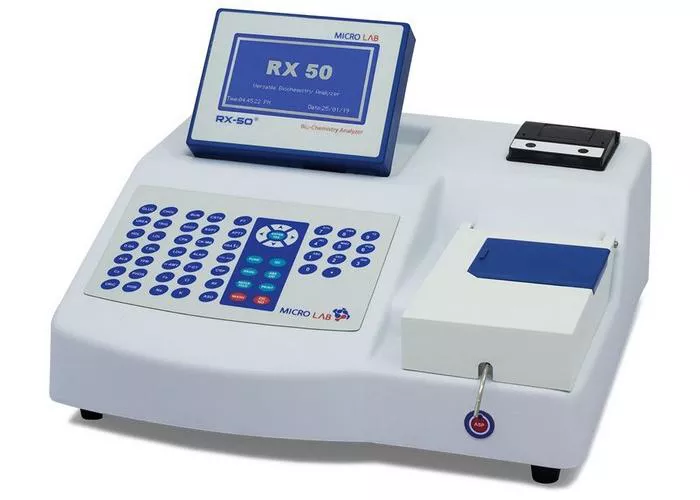Electrochemical oxygen analyzers are essential devices widely used in various industries to measure oxygen concentration in gases. Their precision and reliability make them indispensable in applications ranging from environmental monitoring to industrial process control and medical respiratory equipment. These analyzers leverage electrochemical principles to detect oxygen levels with accuracy, efficiency, and responsiveness.
How Electrochemical Oxygen Analyzers Work
At the heart of an electrochemical oxygen analyzer lies a sensor that operates based on an electrochemical reaction. The sensor typically consists of three electrodes — an anode, a cathode, and a reference electrode — immersed in an electrolyte. When oxygen molecules come into contact with the sensor, they participate in a redox reaction, generating a current proportional to the oxygen concentration.
Specifically, oxygen diffuses through a permeable membrane to the cathode where it undergoes reduction. This electron transfer generates an electrical current which is then measured and interpreted by the analyzer’s electronics. The magnitude of the current correlates directly with the partial pressure or concentration of oxygen present in the sampled gas.
Components and Construction of Electrochemical Oxygen Sensors
The construction of an electrochemical oxygen analyzer sensor involves several critical components:
- Gas-Permeable Membrane: This membrane controls oxygen diffusion rate into the sensor, protecting internal components from contamination and moisture.
- Electrodes: Typically made from inert materials like platinum or gold, the electrodes facilitate the redox reactions essential for measurement.
- Electrolyte: The electrolyte solution or gel supports ionic conduction between electrodes, completing the electrochemical circuit.
- Housing and Signal Conditioning: The sensor is encased in a protective housing with electronic circuitry that converts the current output into a usable oxygen concentration signal.
How Electrochemical Oxygen Analyzers Function in Real-Time Applications
Upon exposure to the gas sample, oxygen molecules diffuse through the membrane and react at the cathode, while the anode facilitates oxidation of an internal element, often lead or silver. The resulting current is measured by the analyzer’s electronics. Because the current generated is linearly related to the oxygen partial pressure, the device can accurately report oxygen concentration in percentage or parts per million (ppm).
The analyzers usually require calibration with known oxygen standards to maintain measurement accuracy over time. Many modern analyzers include temperature compensation to correct for variations caused by environmental conditions, enhancing the robustness of the readings.
Key Advantages of Electrochemical Oxygen Analyzers
Electrochemical oxygen analyzers offer several advantages that have driven their widespread adoption:
- High Sensitivity and Specificity: These analyzers respond primarily to oxygen, minimizing cross-sensitivity to other gases.
- Low Power Consumption: Their operation requires minimal electrical power, making them suitable for portable and battery-operated devices.
- Compact and Lightweight: Electrochemical sensors are typically small, allowing easy integration into various instrumentation setups.
- Cost-Effectiveness: Compared to other oxygen sensing technologies like paramagnetic or zirconia sensors, electrochemical analyzers are often more affordable.
- Rapid Response Time: These analyzers can detect oxygen changes quickly, essential for dynamic environments or safety monitoring.
Common Industrial and Environmental Applications
Electrochemical oxygen analyzers find utility across diverse fields. In combustion control, they optimize air-to-fuel ratios to improve efficiency and reduce emissions. In environmental monitoring, they help measure oxygen levels in ambient air or exhaust gases. In medical settings, these analyzers ensure accurate oxygen delivery in respiratory therapy and anesthesia.
Moreover, industries employing instrumentation systems benefit from integrating these analyzers into multi-gas analysis setups to monitor oxygen alongside other critical gases, enhancing process safety and product quality.
Comparison with Other Oxygen Sensing Technologies
While electrochemical analyzers are widely favored, alternative technologies exist, including paramagnetic, zirconia, and thermomagnetic oxygen analyzers. Paramagnetic analyzers exploit oxygen’s magnetic properties, while zirconia sensors utilize a solid electrolyte to measure oxygen partial pressure at high temperatures. Thermomagnetic oxygen analyzers rely on temperature changes caused by oxygen’s magnetic susceptibility.
Compared to these, electrochemical oxygen analyzers provide a balance of cost-efficiency, sensitivity, and operational convenience, especially suitable for low to moderate oxygen concentration ranges and ambient temperatures.
Maintenance and Calibration of Electrochemical Oxygen Analyzers
To ensure consistent performance, regular maintenance and calibration are crucial. Over time, electrolyte depletion, membrane degradation, or electrode contamination can affect sensor accuracy. Routine checks and recalibrations with certified calibration gases restore reliable measurements.
Advanced analyzers may include automated calibration routines and diagnostics to alert operators of sensor drift or faults. Proper maintenance extends sensor lifespan and guarantees data integrity in critical applications.
Emerging Trends and Innovations
Recent advancements focus on enhancing sensor longevity, miniaturization, and integration with digital communication protocols for Industry 4.0 compatibility. Development of robust electrolyte formulations and advanced membrane materials are improving durability in harsh environments.
Furthermore, combining electrochemical oxygen sensors with multi-gas analyzers expands their capability to simultaneously monitor oxygen along with gases like carbon monoxide, nitrogen oxides, and hydrocarbons, providing comprehensive environmental and safety data.
Conclusion
Electrochemical oxygen analyzers stand as a vital tool in modern industrial and environmental monitoring due to their precision, affordability, and adaptability. By converting oxygen concentration into measurable electrical signals through a controlled electrochemical reaction, these analyzers facilitate accurate, real-time monitoring essential for safety, efficiency, and regulatory compliance.
Understanding their operation, maintenance, and application scope enables engineers, technicians, and end-users to leverage their full potential across diverse sectors. As sensor technology continues to evolve, electrochemical oxygen analyzers will maintain their pivotal role within the broader ecosystem of gas analysis instrumentation.

